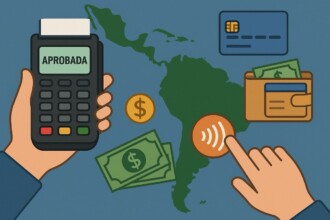Greenwashing is quite a widespread issue in today’s corporate environment. It undermines public trust in brands’ ESG claims and negatively affects the climate. Appealing to the conscience of business executives is not enough. However, the joint efforts of regulators and modern technology developers may bear some fruit. Here are some examples of how artificial intelligence (AI) can help prevent greenwashing practices.

What Is Greenwashing?
Greenwashing is misrepresenting a product or corporate activity by labelling it “greener” than it actually is. The reasons for greenwashing may be different. Businesses often make misleading sustainability statements to appear more ESG-focused in the public eye since both consumers and governments pay attention to these sorts of claims. At the same time, some companies may unknowingly misrepresent their sustainability efforts due to the lack of reporting standards and inaccurate carbon footprint calculations.
Fraudulent Greenwashing
Greenwashing is often a fraudulent way for companies to capitalise on the growing consumer demand for environmentally friendly products and services without making substantial changes to their business practices. Greenwashing companies can, for instance, charge higher prices for products that are perceived to be environmentally friendly, even if they are not truly much different from non-green alternatives. Non-ethical businesses can also use greenwashing to give the impression they comply with environmental regulations and improve their public image.
Unintentional Greenwashing
Unfortunately, not all companies correctly assess their environmental initiatives. According to a 2021 survey from Boston Consulting Group, businesses on average illustrate an error rate of 30% – 40% in their emissions calculations. Using ineffective carbon offset methods is one of the most common mistakes that make businesses unintentionally greenwash. Many companies also set inadequate net zero targets or neglect an accurate inventory of their full-cycle greenhouse gas emissions.
Forms of Greenwashing
Greenwashing may appear in different forms and disguises. Here are the most common types:
- Misleading ads and labels – vague or deceptive language appears on product labels or in advertising with unsubstantiated environmental benefit claims.
- Downplaying environmental impact – companies often focus on irrelevant or secondary environmental initiatives that do not affect the sustainability of their core business or the product/service advertised.
- Exaggeration – businesses may overstate the environmental benefits of their products or services, and present inflated data on their energy savings, carbon footprint reduction, or environmental impact mitigation.
- Green imagery – the intentional use of green colour, nature images, environmental symbols, etc. on labels or in ads is a visual trap for consumers who may perceive the product as environmentally friendly even if it isn’t directly implied.
- Token environmentalism – superficial or minor changes to corporate operations are often heavily promoted as evidence of environmental responsibility, though they do not significantly affect the company’s carbon footprint. By highlighting minor environmental initiatives, companies may even divert attention away from more substantial environmental challenges or negative impacts of their activities.
- Lack of transparency – businesses may hide the unappealing facts and statistics about their activities to prevent ESG-focused consumers from making informed choices.
- False statements – some businesses present outright fake certificates or make misleading statements to create the illusion of pursuing sustainability and meeting environmental standards.
The Scope of the Issue Is Incessantly Growing
Cases of greenwashing are not seldom met with. Therefore, concerns about greenwashing issues are universally high across all industries. The late 2023 Kantar survey revealed that over half of respondents believe brands of all types are misleading stakeholders when reporting their sustainability actions. Is that assumption close to reality?
ESG data and research firm RepRisk claims that greenwashing incidents are growing both in frequency and complexity. Thus, companies making misleading environmental claims made up 25% of climate-linked risk incidents from September 2022 to September 2023, up from 20% in the same period the year before.
The financial services sector greatly contributes to the infamous surge. RepRisk recorded 148 greenwashing cases from the banking and fintech industry globally in the September 2022 – September 2023 period, 70% up from 86 incidents registered during the previous 12 months. The vast majority of these cases (106 to be precise) occurred at European financial institutions.
The European Commission statistics also show that 53% of sustainability claims on products and services contain vague, misleading or unfounded information. A large proportion of such claims (40%) are not substantiated by evidence and facts. Half of the 230 sustainability labels currently used in the EU lack verification. That all leads to confusion and a lack of trust among consumers.
A recent research from Ivalua has found that nearly half (45%) of U.S. organisations believe that they could be at risk of unintentional greenwashing. Due to the lack of regulatory clarity, less than half (48%) of U.S. businesses surveyed are “very confident” that they report on Scope 3 emissions accurately. At the same time, an alarming 62% say reporting on Scope 3 emissions feels like a “best-guess” measurement.
How to Prevent Greenwashing?
One of the main concerns about executives is unintentional greenwashing which is often linked to vague regulations and reporting requirements on the ESG topic. The solution to this problem may be clear and harmonised reporting rules, certification procedures, and transparent substantiation mechanisms for sustainability claims.
However, not all the initiatives come down to the regulatory efforts. Technological innovations such as artificial intelligence (AI) can make a big difference in the assessment of sustainability efforts and practices. Organisations require good data-driven insights to make ESG-focused decisions. Here is how AI can help business executives.
The Role of AI in Greenwashing Prevention
One thing AI is good for is data analysis and summary. Thus, AI-powered algorithms can analyse text samples from marketing materials, product labels, and corporate reports to flag inconsistencies and help identify misleading or exaggerated environmental claims.
At present, Ernst & Young is testing a prototype of an AI tool called the “Greenwashing Compass,” which can effectively analyse intricate texts, such as sustainability reports, based on greenwashing risks and the criteria outlined in the “Guide Against Greenwashing” developed by Skift Business Climate Leaders. It can further identify problem areas and offer suggestions for improvement. Although the tool still requires fine-tuning, it is a good example of a practical AI-based counter-greenwashing solution.
In addition, AI can help verify the legitimacy of environmental certifications and labels used by different companies. As we know, in the EU alone, there are a few hundred various eco-labels, most of which are not substantiated with enough evidence. By comparing certification databases with product claims and analysing the credibility of certification bodies, AI tools can help both consumers and regulatory agencies identify false or misleading certifications.
Working with suppliers is critical in achieving net zero targets. According to the Ivalua report, over half (51%) of organisations agree that green initiatives to reach net-zero goals that don’t involve suppliers are a waste of time. Therefore, AI can power supply chain monitoring systems that track and analyse the environmental impact of products throughout their lifecycle, from raw material sourcing through manufacturing to distribution, and finally disposal. More transparency in the supply chain management will give a clearer carbon footprint picture of any given product or service.
Not only businesses but also regulators can avail of the AI potential. For instance, they can use ‘smart’ technology in monitoring and enforcing compliance with environmental regulations and advertising standards. By analysing vast amounts of data and identifying patterns of non-compliance, AI can help regulators target enforcement actions against companies engaged in greenwashing practices.
With AI automation, regulators can easily achieve multi-criteria assessment of sustainability practices. Understanding the performance across all key environmental and risk categories will give a more precise summary of a company’s ESG profile. It is also crucial to avoid overlooking critical side-effects of certain products and services.
AI can be also used in consumer-focused applications that help them distinguish between eco-friendly and standard products. For example, chatbots on marketplaces and e-commerce platforms can assist consumers who are looking for sustainable fashion choices with prompt suggestions. AI-powered fintech apps can also calculate individual carbon impact based on transaction history and suggest more sustainable options.
Moreover, AI-driven recommendation systems and messages can educate consumers about greenwashing tactics and empower them to recognize and avoid products and companies engaged in greenwashing.
On a Final Note
Consumers are increasingly seeking ways to lower their carbon footprint. However, they find it hard to distinguish between truly ESG-focused brands and products as the majority of companies tend to engage in greenwashing, whether wittingly or not. Preventing greenwashing may start with strengthening regulatory efforts, but to ensure compliance businesses need to use innovative technologies including AI. AI-driven recommendations, supply chain tracking and data analysis can help prevent greenwashing on all levels of production and commerce. Although available AI tools are in their infancy, sustainability-conscious companies should already make use of the developing technology to boost their net zero emission goals.









